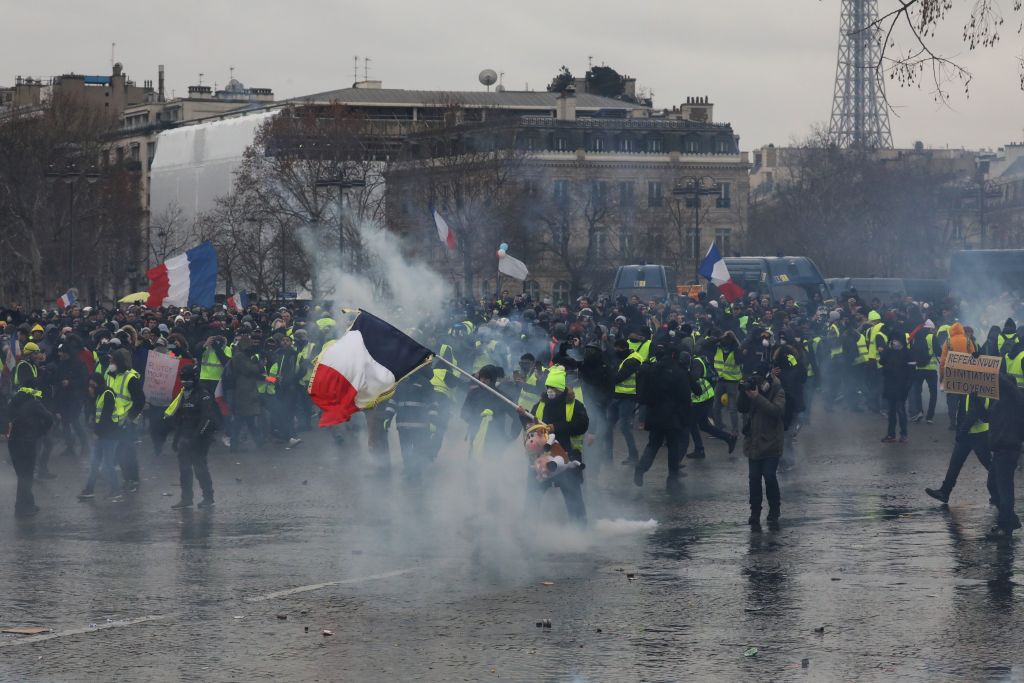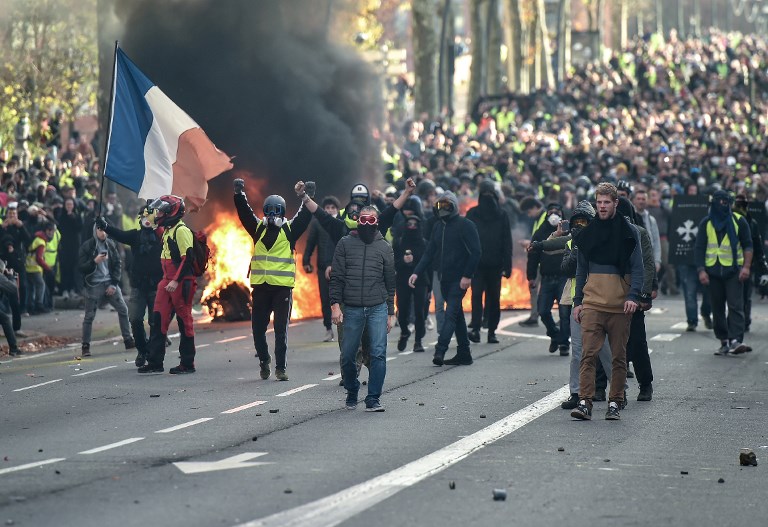Yellow Vest Protests Enter 2nd Month

In France, the “yellow vest” protesters took to the streets again over the weekend. The protests against a fuel tax erupted on November 17th 2018 when people across France donned high-visibility vests, giving them their nickname the yellow vests, and went out to disrupt traffic. Similar actions have followed every weekend and while the number of demonstrators has dropped, cities across France continue to see rioting and disruption. At least six people have died and at least 1,400 have been injured as a result of the unrest.
What began as anger over green tax on vehicle fuel has grown into more general discontent with the leadership of President Emmanuel Macron, who protesters accuse of favoring the urban elite. The intensity of the protests forced the government to halt the plans for the fuel tax hike but demonstrators called for additional economic reforms, and many for the resignation of President Emmanuel Macron. While Macron said the tax was necessary to “protect the environment” and “combat climate change”, protesters claimed the decision was yet another sign that the “privileged” president is out of touch with regular folk struggling to make ends meet.
President Emmanuel Macron delivered a national address announcing he would raise the minimum wage and cancel a tax increase on low-income retirees. He also proposed some social reforms, including an increase in the minimum wage by 100 euros ($113) a month beginning in January that will not cost employers extra and a promise that overtime hours will not be taxed. While Macron’s announcement appeased some demonstrators, many continue to take to the streets.
Last week, a group of protesters in Paris rammed a forklift into a government ministry building, while violent confrontations between some demonstrators and police took place in the capital. French security forces fired tear gas and flash-balls after a march through picturesque central Paris turned violent. Rioters started fires on the prestigious Boulevard Saint Germain in Paris. Police boats patrolled the river while beyond the Seine, motorcycles and a car were set on fire on the Boulevard Saint Germain. Riot police and firefighters moved in with a water canon as barricades mounted in the middle of the wide street burned.
A reported 50,000 people across the country came out as the movement is now in its second month of protests. While the number of rioters has dwindled from the 280,000 that joined the protests in November, the disruption and destruction of property continues. The march had been declared in advance and approved, in contrast to some illegal December demonstrations that degenerated into vandalism, looting and chaos.
After two months of civil unrest, the government has declared it will crackdown on the disruption. Prime Minister Philippe said the government would support a “new law punishing those who do not respect the requirement to declare protests, those who take part in unauthorized demonstrations and those who arrive at demonstrations wearing face masks”. Known troublemakers would be banned from taking part in demonstrations, in the same way known football hooligans have been banned from stadiums.



